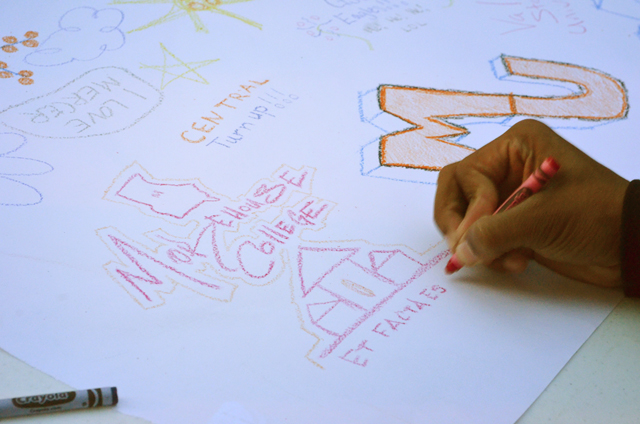
A changing narrative in Macon, Ga., and cities everywhere
Photo by Molly McWilliams Wilkins.
Mark Vanderhoek leads the Macon Chapter of the League of Creative Interventionists, which Knight Foundation supports to to promote community engagement.
In a world where we are bombarded with messages of scarcity – “while supplies last,” “I just don’t have the time” – we often fail to appreciate the abundance that surrounds us.
In many cities, scarcity is the prevailing view. Detractors and many times the residents themselves come to define their cities by what they lack: jobs, shrinking populations, blight, struggling schools. This was once the prevailing view in Macon. But I have witnessed firsthand how this view of a scarce world is a failure of vision, rather than the whole story, or even the biggest part of the story.
I cannot blame those who think this way. Our modern world is awash in this message of never enough. Our politics is dominated by messages of fear and division. But these are perspectives; they are not the truth.
It is certainly not the truth in Macon.
I have the privilege to lead a group of artists, the Macon Chapter of the League of Creative Interventionists, which is supported by Knight. Knight’s vision for Macon includes a strong commitment to community engagement, including work like ours. We are helping to create a new, more positive narrative in our city through monthly public art interventions.
But our work is only one part of Macon’s story of abundance. Here in Macon, a dedicated group of individuals and institutions have pushed back on the idea of scarcity. Thanks to artists, entrepreneurs and activists, and everyday people, we are shifting our perspective. We no longer see the future through the prism of a limited present; we see an abundant future through the lens of what has become a promising moment in time.
Knight Foundation has been at the forefront of the movement to change the narrative here in Macon. Its investment over the last several years in the College Hill Corridor, helping the neighborhood become a more vibrant place, has helped reap a huge return – more than $100 million in reinvestment back into the community. It is the beginning of an amazing transformation, and it is a story of abundance.
We are doing better as a city, but we can do more. And that will create more opportunities. We have thousands of people who barely participate in our community, who are barely able to keep their heads above water. But they are capable of doing so, if they are activated and engaged.
We get lost in these giant statistics and forget that each person in our city, in our neighborhood, has the potential to become a part of something larger. We have more than 27,000 children in our public schools. Each one represents the potential for greatness, but each one is also a future community member, mother or father, artist or entrepreneur.
If we view our cities, our communities, our world as if everyone matters and everyone can make an impact, then we begin to look beyond the statistics and see the potential; we begin to see the abundance that surrounds us.
Our first project as the Macon Chapter of the League of Creative Interventionists was based on our shared theme of “Neighbor.” So we set up lemonade stands around the city to ask people to tell us a story of why they loved their neighborhood or their neighbors.
We found the love in this city, love for neighbors and love for our neighborhoods. People showed up in droves at the lemonade stands.
Some people didn’t get it. Several people came to us and told us stories of how their neighborhoods were in decline. However, we heard from hundreds of people who had something good to say about their neighborhoods, places such as Pleasant Hill, once the thriving center of the black community in Macon.
Now divided by Interstate 75, Pleasant Hill has been wracked by declining population and crime, in other words, a view of scarcity. However, it is not without abundance. People still care for the neighborhood. Parents still look out for their children. Its blighted properties have given way to a community garden. Children make friends, fall in love, and grow up.
It is these stories that we can hold onto and build on as we look to a future of prosperity in our city.
They might have seemed like simple lemonade stands, but they were really something more. They were places for people to think about, and embrace, what is good about where they live and look to a brighter future.
A future as a city of abundance.
Recent Content
-
Communitiesarticle ·
-
Communitiesarticle ·
-
Communitiesarticle ·


